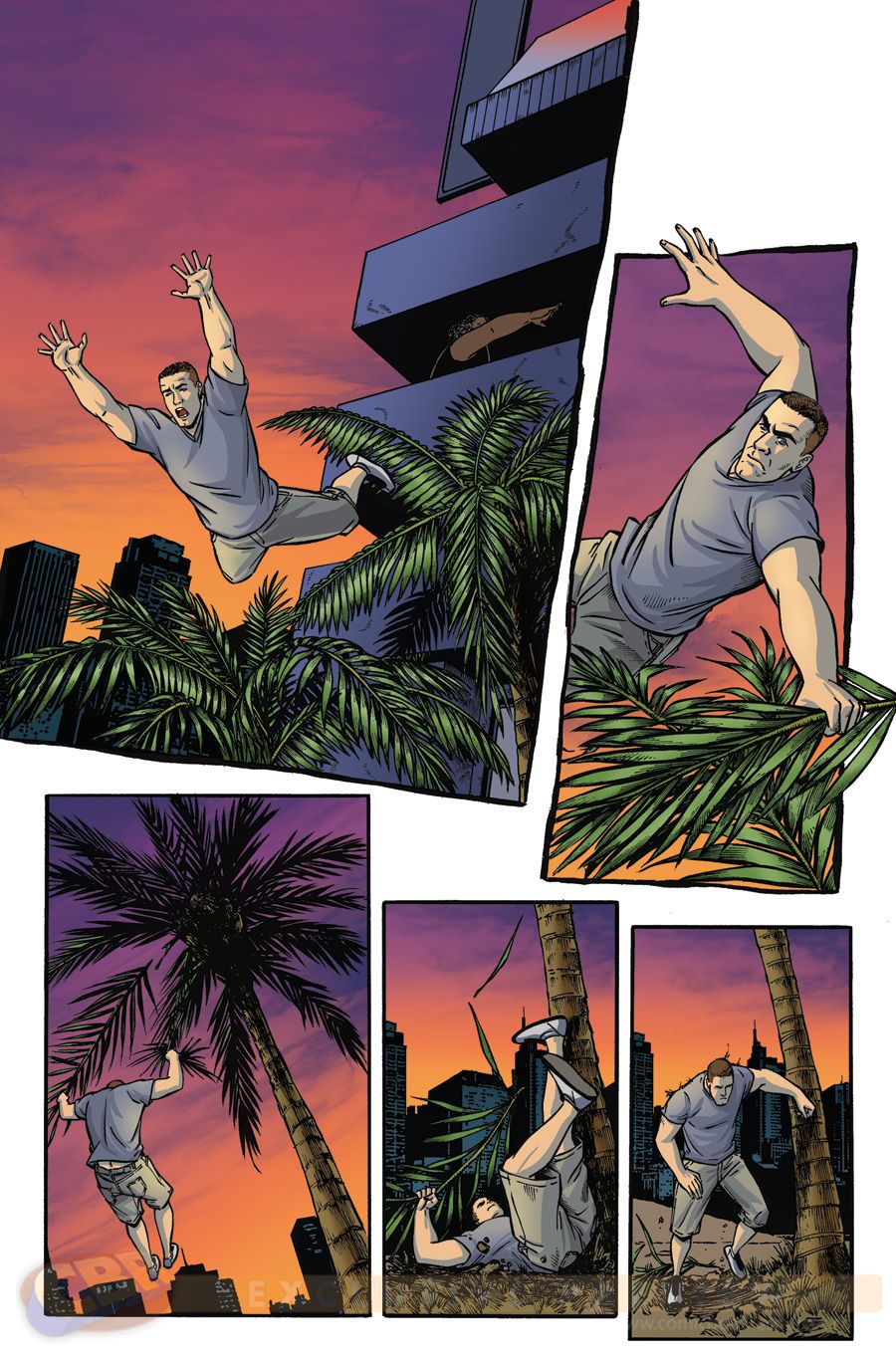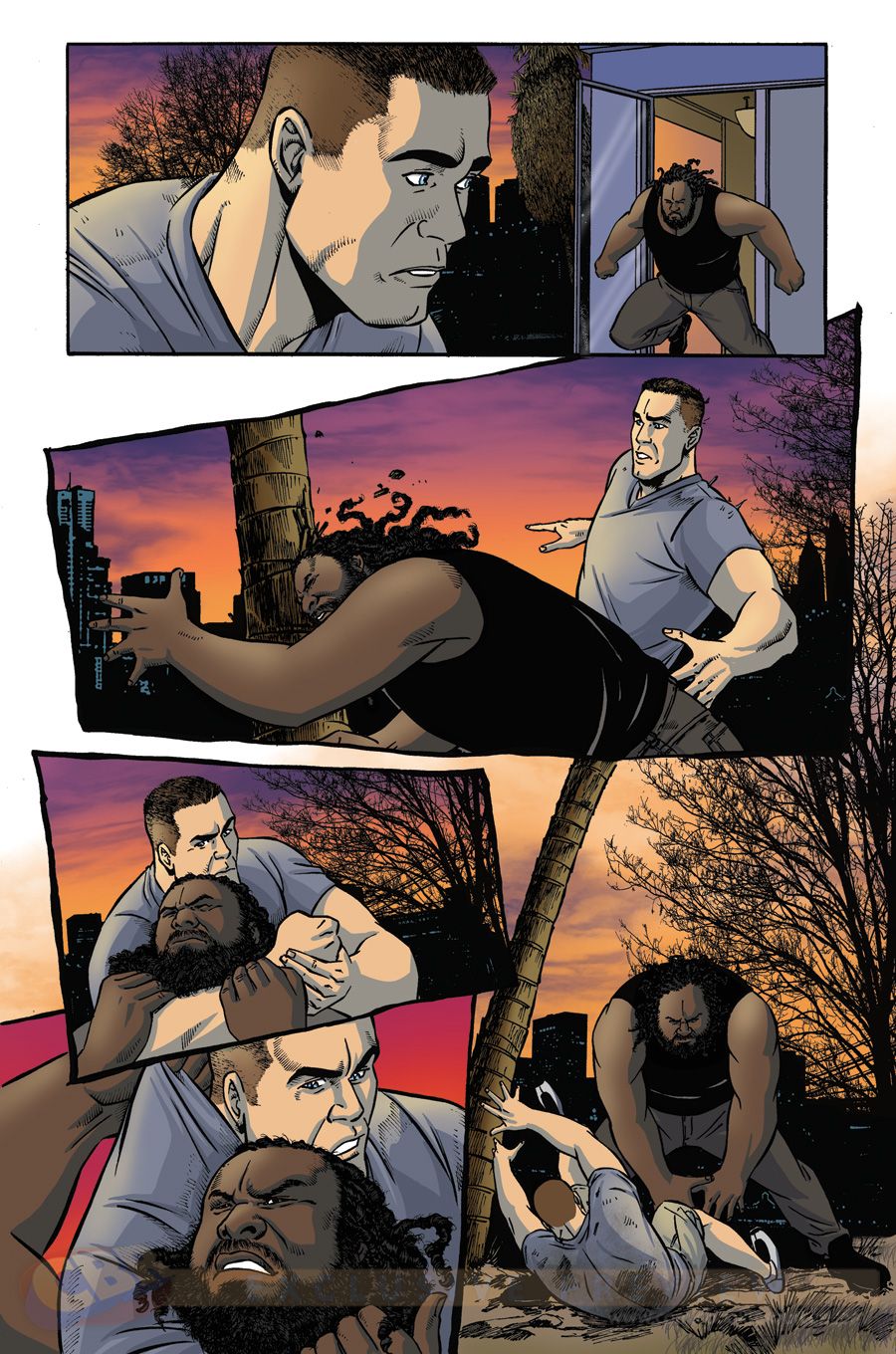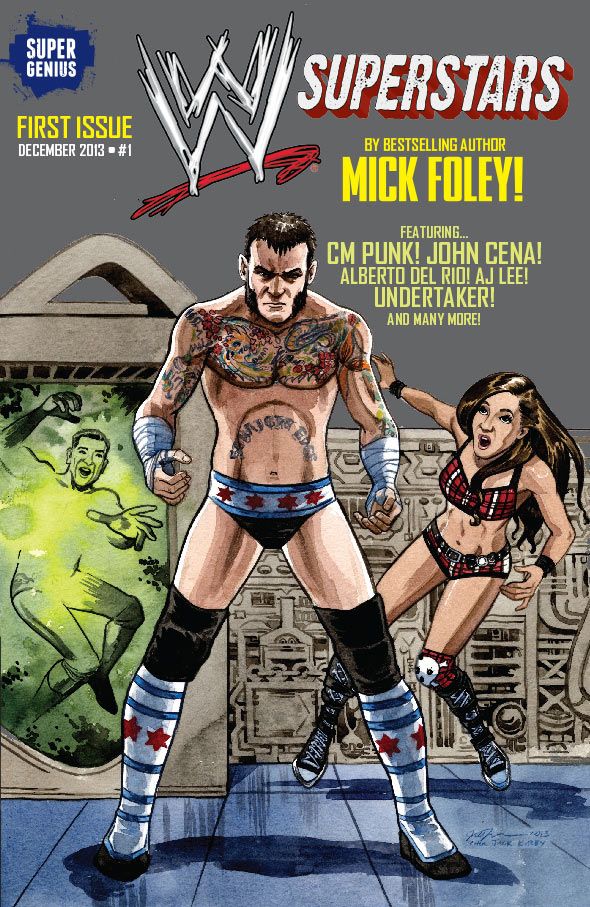Comic books and pro wrestling have had an interesting shared history. There are wrestlers who are noted comics devotees (WWE standout CM Punk wrote the introduction to Marvel's "Avengers vs. X-Men" collected edition) and comic book creators who are wrestling fans ("Scary Godmother" creator Jill Thompson designed ring gear for another current star, Daniel Bryan). There have been multiple comic books based -- often quite loosely -- on the already colorful world of pro wrestling, and in the early '90s there was even a webshooting wrestler named "Arachnaman,", an unlicensed homage to a certain friendly neighborhood superhero.
The latest comics/wrestling collision debuts this week in the form of "WWE Superstars," a new ongoing series from Super Genius, a new imprint from all-ages publisher Papercutz aimed at an older audience. "WWE Superstars" comes equipped with one of the clearest advantages such a venture can have: Mick Foley, a WWE Hall of Famer and "hardcore legend" who also happens to be a bestselling author, with multiple memoirs, fiction novels and children's books among his writing credits. Foley co-writes the series with Shane Riches, his collaborator on 2010 12-Gauge Comics series "R.P.M.," with art from recent "Batgirl" and "New Crusaders" illustrator Alitha Martinez -- who also drew a cover for the first issue, along with Thompson, Dean Haspiel, Michael Golden and Miran Kim.
The WWE frequently characterizes their product as "sports entertainment," and "WWE Superstars" embraces that notion, with the comic's storyline recasting performers including Punk, Bryan, Triple H, Alberto Del Rio, The Undertaker and Brock Lesnar as players in the hardboiled, crime noir landscape of "Titan City." According to co-writer Riches, though he's retired from in-ring action, Foley himself -- or one of his three famed personas; Mankind, Cactus Jack and Dude Love -- will appear in each installment of "WWE Superstars." "There will definitely be a cameo of Mick in some form in every issue," Riches told CBR. "That said, you may have to look for him a bit. Kind of a 'Where's Waldo' Easter egg in each issue."
There's still wrestling action, but it's as likely to happen outside of the ring as in it, with a main plot involving a falsely imprisoned John Cena, and a corrupt Randy Orton's attempt rise to political power. CBR News spoke with Foley -- hours before he presented at this past Monday's Slammy Awards -- about the comic book/wrestling connection, devising the "WWE Superstars'" unconventional story and using past pro wrestling comics as a lesson on what not to do.
CBR News: Mick, "WWE Superstars" is your return to the comic book medium, after doing "R.P.M.," also with Shane Riches, a few years back. This being the second time around, and a pro wrestling-themed comic -- though it clearly departs from strictly pro wrestling -- did this come a little easier? Do you feel more in the rhythm of comic book writing?
Mick Foley: I think rhythm is a good word. These are characters I really knew, and just had to expand on, whereas my last venture, we were creating characters. I'd go out on a limb and [call it] "challenging," because you want to do the characters justice -- especially because you have to work with them! [Laughs] But it was very rewarding, as well.
How did you arrive at the approach of taking wrestling tropes and the current WWE roster and putting it into a crime noir story? Were there some parameters given to you guys?
No. Shane and I knew we were taking a big risk by developing a story where we took the WWE Superstars outside the ring, but we really didn't want to be in a situation where we were just duplicating what the WWE Universe could see every Monday or Friday night. We took a gamble and presented Papercutz and WWE with this idea, and they liked it.
Just duplicating the TV show would have been the easy route. I think this one was a better way to go, and definitely more rewarding from a creative standpoint.
What was the process like of taking wrestlers who are famous in one context and presenting them in a completely different one -- like Alberto Del Rio and Randy Orton opposing each other for district attorney. How'd you figure out who was going to go where, especially with such a large cast?
We realized there's room for plenty of superstars on the roster to fit in, eventually. We wanted to recreate the divisiveness that John Cena is known for in the ring, and bring it outside the ring -- where he's loved by half the population, and loathed by the other half. The other characters just seemed like natural extensions of themselves.
In a strange way, it's what I've done with WWE Superstars in the children's books, by taking their characteristics and making them children. Here, with Shane's help, I've taken their characteristics and put them in an alternate universe.
Were there any Superstars who were particularly tricky to find the right role for in this story?
We batted around people, and came up with ideas we eventually didn't go with, but I'm pretty happy with the roster and the way they're portrayed. I knew a few of the guys are huge comic book fans and are anxious to see what they look like coming alive in comic book form. It's kind of immortalizing.
You know that first hand -- you were in the old-school, early '90s "WCW" Marvel comics.
I was, so I knew what not to do. [Laughs] I grew up on Marvel Comics, so I was thrilled to be in the couple of ["WCW" comic book] storylines, but I think, clearly, the product that Shane and I have come up with is a lot more imaginative and fun.
It's interesting to see the "WWE Superstars" comic take this current roster out of the ring and do more of an over the top story, since the product, for the most part, is more grounded than, say, the late '90s "Ministry of Darkness" era.
Yeah. I also had a 1999 "Mankind" comic book, written by Steven Grant, who wrote the "2 Guns" graphic novel that was turned into the Denzel Washington/Mark Wahlberg movie. He later told me that the title "2 Guns" was inspired by my trademark "Bang! Bang!" pre-match ritual.
That story was really dark. We wanted some realism, but also a sense of fun that was missing, for me, in the '99 book.
You've mentioned in the past your appreciation for comics, and you've worked with Jill Thompson before on your children's books. How big of a comic book reader are you at this point in your life?
I've had to get back into it, because it's been so long since I've seen stories told in that form. I actually went back when we were doing "R.P.M." and reread about a hundred of my "Hulk" comics, and found it amazing to see just how quickly stories can progress within a two-issue arc, from the origin of a heel character to the heat-getting process, as we call it in wrestling, to a conflict, and, usually in the second issue, resolution through victory.
This stretches out longer; it's not quite as definitive. There is some grey area between bad guys and good guys, which I always liked in my comic book characters, anyway.
Do you and Shave have a set length planned for this story?
I think this is going to be a four-issue arc, and then we're going to start another arc, and do a total of eight [issues].
All set in the same world?
Well, after the four, we'll see. We're not there, yet. We're deciding where we're going to take it. I want there to be some surprises for you.
And just a news flash: My son Hughie, 10-years-old, published his first book with Jill Thompson's artwork. We self-published it, and Jill came up with some amazing artwork. As of now, there are only 18 copies, but I love it. I felt every bit as proud when I held that first copy in my hands as I did when I saw my first memoir.
There's a definite connection between wrestling and comic books -- how deep of a link do you see it being between the two?
You don't have to venture very far into the comic book world to see that connection. You just go to a comic con or a Wizard World, and you see that our fans are their fans, and their fans are our fans. There's a definite overlap.
Even beyond that, there are a lot of wrestlers who are comic book fans and comic book creators who really love wrestling.
It's a big lovefest when the two businesses get together.
There's the obvious explanation that they are similar in that they both present colorful, theatrical conflicts, but do you think there's something deeper?
I think the really good characters appeal to kids who maybe felt a little bit like outsiders. That's why I think the antiheroes have been so popular over the years in comics, and probably why the Batman adaptations have fared better over time than Superman, because there's a little more grey area, a little more internal struggle.
Are there any other writing projects you've got going on right now beyond the comic?
I love doing my one-man shows. I just finished off my 2013 tour, and I'm gearing up for an entirely new show for 2014, so that's a writing process, as well -- sitting down and having the notebook handy at all times, writing down thoughts, weeding them out, seeing what works. You have the benefit of time, and a larger easel to paint with in these one-man shows -- if something doesn't work, you either refine it, or you don't go back there -- whereas in our comic book, we need to get it right the first time.
The live gigs seem to be keeping you pretty busy -- is that effectively your main focus at this point in your career?
The nice thing about doing those shows is that I can kind of work them around my schedule. Bounce off a card show in Cincinnati, and end up doing a stand-up show in Muncie and a fruit cake-eating competition in Santa Claus, Indiana; wind around with two shows in my hometown of Bloomington, Indiana. I was just joking with our head of talent relations in WWE that I'm on the road as much as most of the active guys.
You were returning to something of a more regular role in WWE as general manager of "Saturday Morning Slam," which is reportedly not coming back --
Yeah, I was looking forward to that. Looks like it's not happening.
Are there plans for you to have more of a regular presence in WWE, or still occasional special appearances?
Yeah, it looks that way. I'm doing the Slammys tonight. There is the potential that someone who looks vaguely like me may appear in a Santa-esque role. But until WWE does come up with something more regular, I'm more than happy to be doing my own shows on the road.
To bring it back to the comic, you must pay close attention to the current product, to be able to incorporate so much of the talent into the story.
Oh, yeah. I watch every week with my kids. We still love it, I'm still a huge fan. I really enjoy the current product -- it's really a pleasure to try to do these characters justice on the written page.
Who are some of your kids' current favorites?
They were going crazy when they thought Damien Sandow might take the title from John Cena. They're both Cena fans, but they sensed an upset victory. They're still big fans of Rey Mysterio. They really enjoy the guys who put on great matches, guys like [Dolph] Ziggler and [CM] Punk. They like the action.
You've talked about your kids also being superhero fans, so they must be excited you're writing a "WWE" comic book.
I don't think it's dawned on them yet. I think I'm going to have to show them the actual comic for them to completely get it.
For WWE fans out there who might not be in the comic book loop, what would you advise to them about checking out "WWE Superstars"?

I would encourage them -- it's not a major commitment in time or effort. [Laughs] I would encourage them to give it a try, which is the same thing I would say to the comic book fan who is not a WWE fan. Give it a try, and see if these characters don't work for you. In the same way the "Total Divas" [E! reality] show is a success with some people who don't even watch our regular programming, I believe we can find an audience composed partially of comic book fans who are not currently watching WWE.




